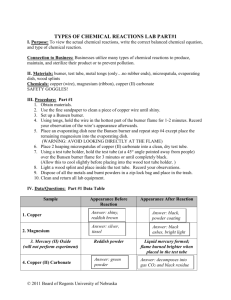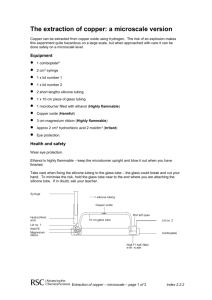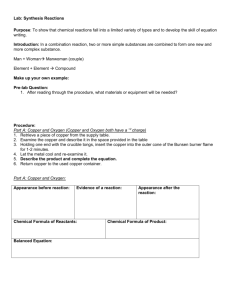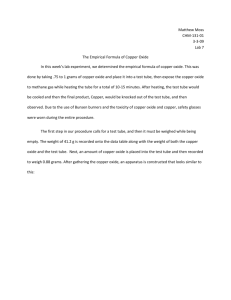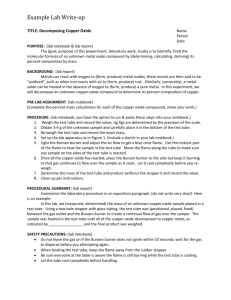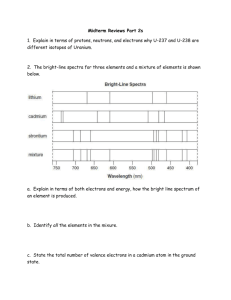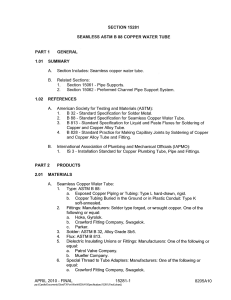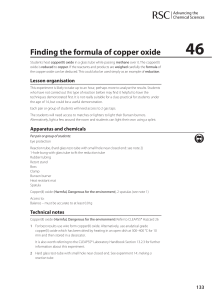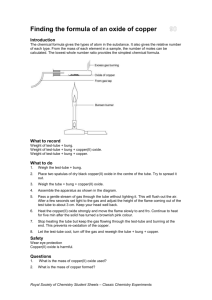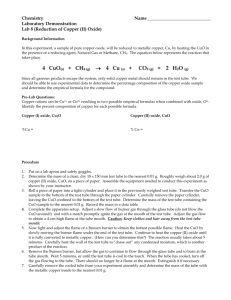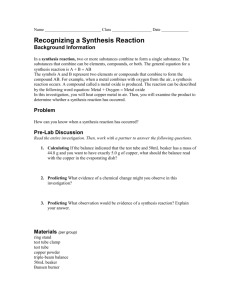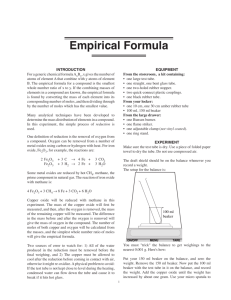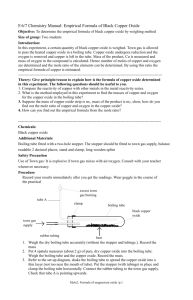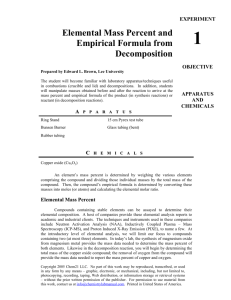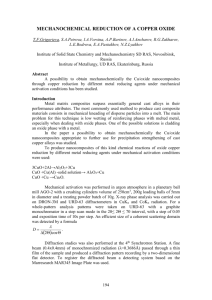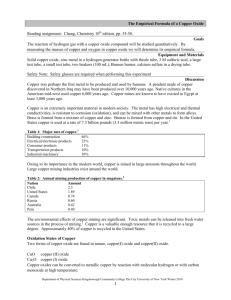Composition of a Mixture of Copper Oxides
advertisement
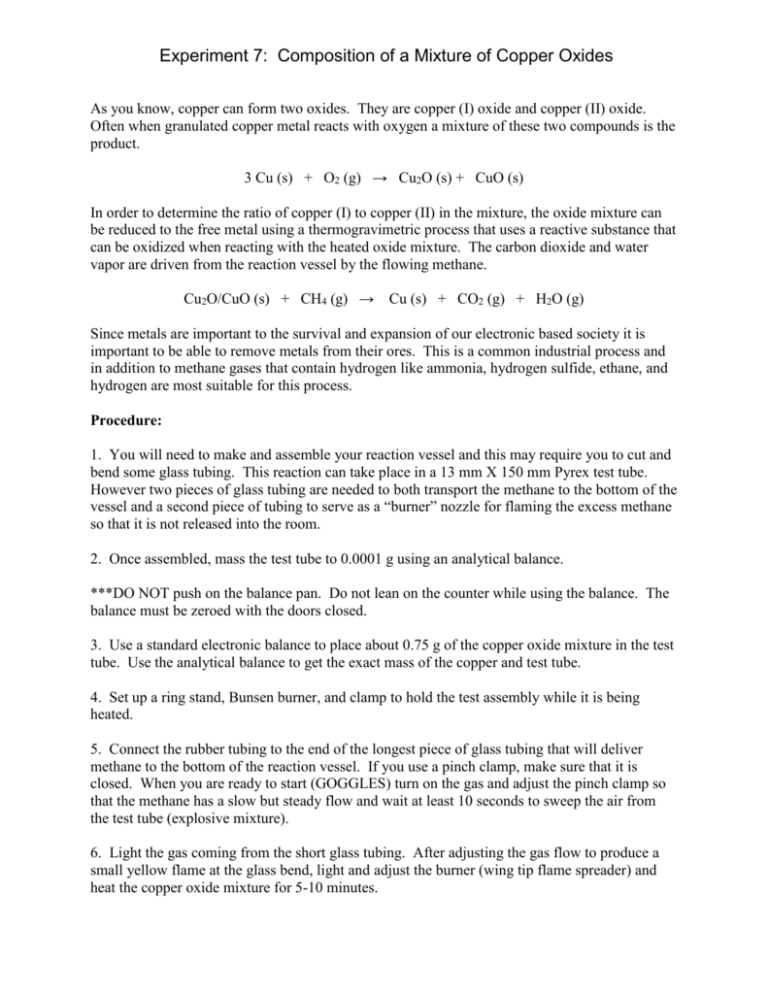
Experiment 7: Composition of a Mixture of Copper Oxides As you know, copper can form two oxides. They are copper (I) oxide and copper (II) oxide. Often when granulated copper metal reacts with oxygen a mixture of these two compounds is the product. 3 Cu (s) + O2 (g) → Cu2O (s) + CuO (s) In order to determine the ratio of copper (I) to copper (II) in the mixture, the oxide mixture can be reduced to the free metal using a thermogravimetric process that uses a reactive substance that can be oxidized when reacting with the heated oxide mixture. The carbon dioxide and water vapor are driven from the reaction vessel by the flowing methane. Cu2O/CuO (s) + CH4 (g) → Cu (s) + CO2 (g) + H2O (g) Since metals are important to the survival and expansion of our electronic based society it is important to be able to remove metals from their ores. This is a common industrial process and in addition to methane gases that contain hydrogen like ammonia, hydrogen sulfide, ethane, and hydrogen are most suitable for this process. Procedure: 1. You will need to make and assemble your reaction vessel and this may require you to cut and bend some glass tubing. This reaction can take place in a 13 mm X 150 mm Pyrex test tube. However two pieces of glass tubing are needed to both transport the methane to the bottom of the vessel and a second piece of tubing to serve as a “burner” nozzle for flaming the excess methane so that it is not released into the room. 2. Once assembled, mass the test tube to 0.0001 g using an analytical balance. ***DO NOT push on the balance pan. Do not lean on the counter while using the balance. The balance must be zeroed with the doors closed. 3. Use a standard electronic balance to place about 0.75 g of the copper oxide mixture in the test tube. Use the analytical balance to get the exact mass of the copper and test tube. 4. Set up a ring stand, Bunsen burner, and clamp to hold the test assembly while it is being heated. 5. Connect the rubber tubing to the end of the longest piece of glass tubing that will deliver methane to the bottom of the reaction vessel. If you use a pinch clamp, make sure that it is closed. When you are ready to start (GOGGLES) turn on the gas and adjust the pinch clamp so that the methane has a slow but steady flow and wait at least 10 seconds to sweep the air from the test tube (explosive mixture). 6. Light the gas coming from the short glass tubing. After adjusting the gas flow to produce a small yellow flame at the glass bend, light and adjust the burner (wing tip flame spreader) and heat the copper oxide mixture for 5-10 minutes. 7. Turn off the gas at the bottom of the Bunsen burner but allow the gas to continue to flow through the tube and burn at the glass tubing. Let the test tube cool (work problems or answer questions while you wait). 8. When the test tube is cool turn off the gas, remove the stopper and tubing, and mass the test tube and contents using the same analytical balance. 9. Return to your desk and repeat steps 5-8 until you get little or no change in the mass. When you feel that you have completely reduced the copper oxides to copper metal place the final product into a zip-lock bag, label with your block, desk, and group number (1-3b), and turn it in. 10. Clean up your lab bench and return all equipment (goggles, Bunsen burner, ring stand) to their proper place of storage. Calculations: 1. Before you come to class to start the experiment work problem # 3.107 on page 128. 2. Use your data to calculate the Cu2O/CuO ratio in your sample.
